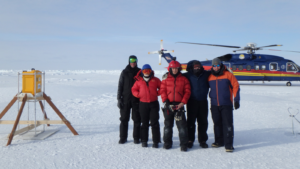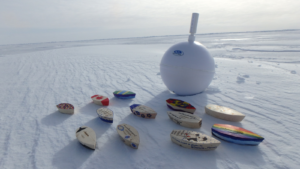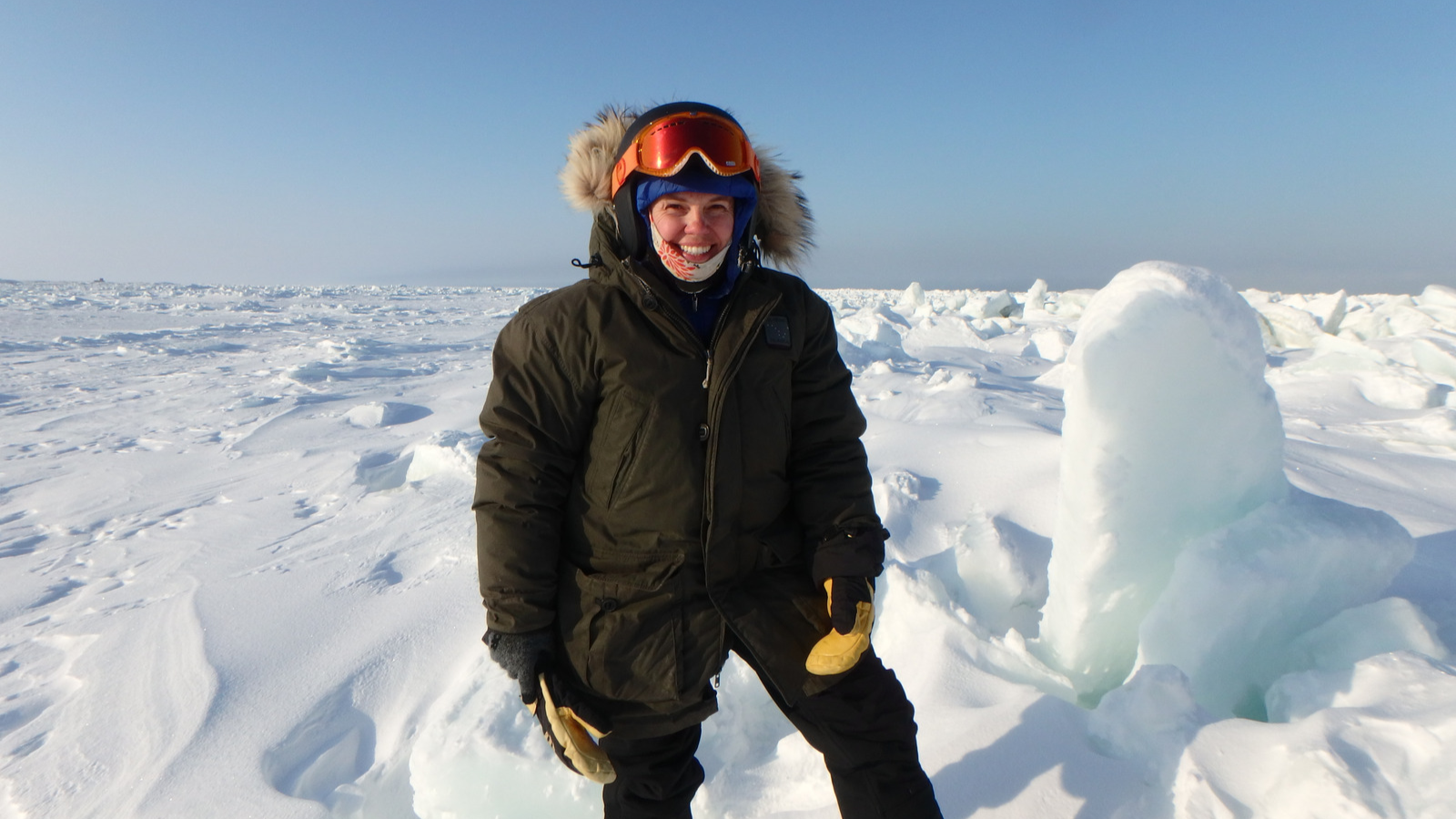At the North Pole, you may not find Santa.
But you’ll find Sarah R. Johnson, ‘05 alumna of Missouri State University.
“I have a strong passion for adventures,” she said. “Being able to combine the exploration of places and understanding of how the world works in a place that is so far, so distant and so beyond what I ever expected myself to do, has been unbelievably exciting and life changing.”
The search for something great
Johnson began her journey with a biology major and a geology minor from MSU.
She then completed her MA in education in 2016 from Hamline University.
Through a very competitive process, Johnson was one of the educators selected in 2020 through the PolarTREC Program to be paired with a science team as an education officer.
She was paired with the International Arctic Buoy Programme.
“I’ve been able to collaborate with educators and scientists in the polar regions,” Johnson said. “This includes both the Arctic and the Antarctic.”

Those who participate in the program are looking for something bigger.
“Scientists need better science communicators and outreach opportunities, while educators want adventures and authentic experiences,” Johnson said.
In April 2022, she finally got to experience both.
Major current, major impact
Throughout the Beaufort Gyre, you can find a string of buoys placed by Johnson and her team.
These floating environmental sensing devices have been a part of this ongoing program since the 1970s.
By sitting on multi-year sea ice and drifting among this arctic current, buoys collect data that influences our understanding of sea ice and the Arctic Ocean.
“The buoys generally drift in a clockwise pattern throughout the Beaufort Gyre before getting caught in the Transpolar Current and drifting into the North Atlantic during their one-to-three-year lifespan,” Johnson said.

The data collected is then sent to the World Meteorological Organization to be included in everyday forecasts around the world.
“The weather forecasts you see on KY3 are influenced by the data our buoys collect,” Johnson said. “What happens in the Arctic influences our weather every day, and forecasts keep getting better with time.”
This data is especially important as scientists and communities continue to better understand the Earth’s changing climate.
“The Arctic has a very large positive feedback loop when it comes to a warming planet,” Johnson said. “What happens to our planet is happening exponentially faster in the Arctic.”
Being a big part of big science
Johnson’s adventures bring more than essential data.
“I’ve had opportunities to build authentic relationships with the science community, high caliber scientists, international leaders and indigenous Alaska natives,” Johnson said.
Her team travels to one of the northernmost parts of the world: Utqiaġvik, Alaska. There, they carry out their data collection while building genuine connections with the local Indigenous people.
“The locals are both our friends and part of the team,” Johnson said. “Whether it is on snow machines or a helicopter, they help us go out onto the sea ice safely.
“They also make sure we have a bear guard with us because polar bears are ferocious.”
Being from a small town herself (Greenfield, MO), Johnson vouches for the importance of her type of work.
“Community and landscapes are connected; they’re the same,” Johnson said. “Bringing science home to rural communities is unique and special.”
This winter, Johnson’s Arctic work will continue in Chicago at the American Geophysical Union fall meeting Dec. 12-16 with her oral presentations.

